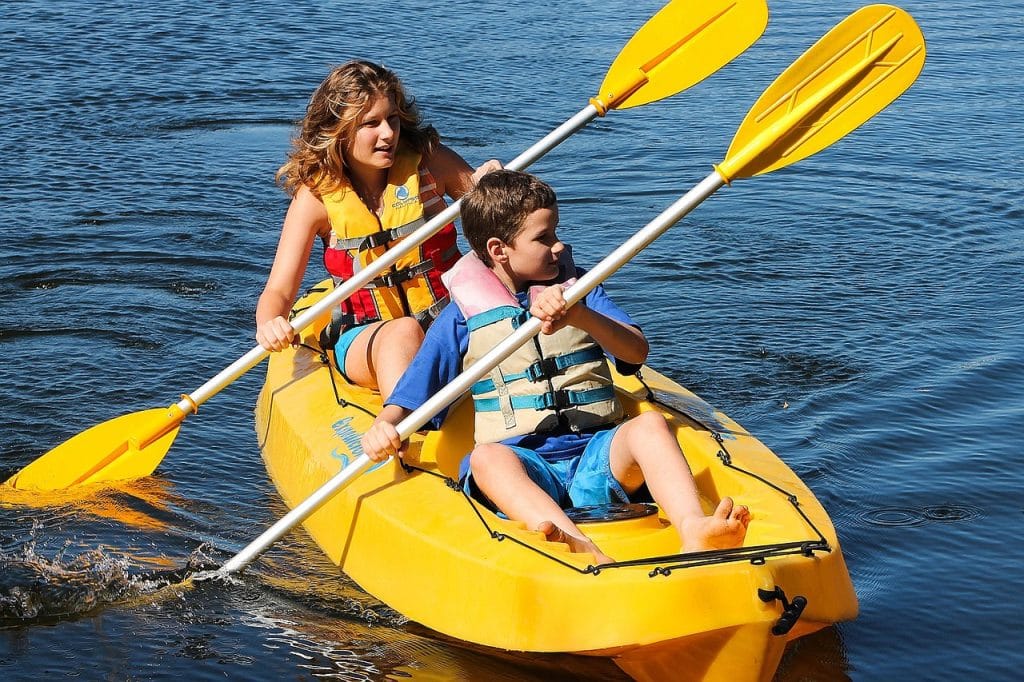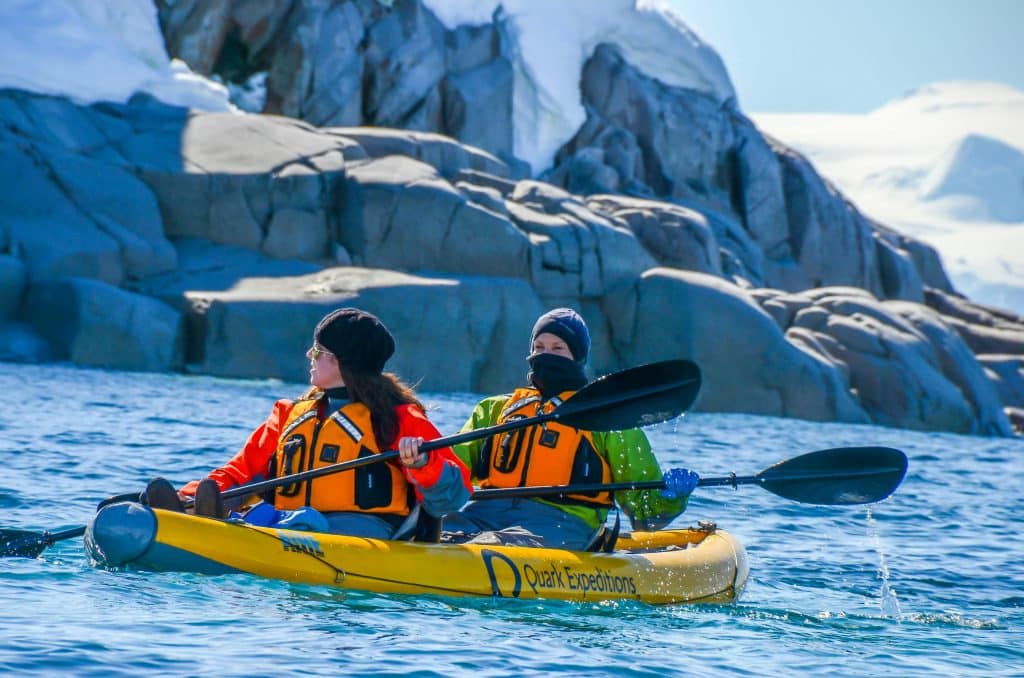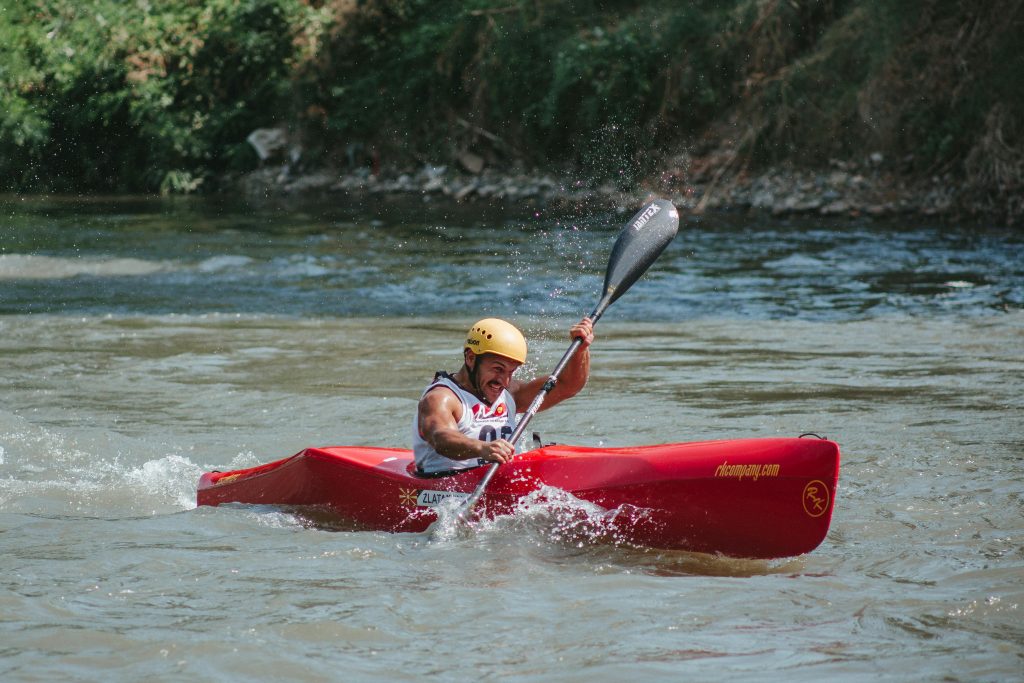Welcome to Kayaking for Beginners!
Learning New Skills and Techniques for Kayaking

Throughout this lesson, you will discover essential tips, tricks, and strategies that will enhance your kayaking abilities, boost your confidence, and ensure a safe and enjoyable experience every time you hit the water. From mastering paddling techniques to understanding water safety principles, this lesson is tailored to help you become a more skilled and knowledgeable kayaker.
Get ready to embark on an exciting learning journey that will unlock the doors to a world of adventure and exploration through the art of kayaking. Let's dive in and start honing your kayaking skills today!
Welcome to the world of kayaking! Before you hit the water, it's essential to familiarize yourself with the basic equipment and safety guidelines to ensure a safe and enjoyable kayaking experience.
Kayaking Equipment:
1. Kayak: The first piece of equipment you'll need is a kayak. There are different types of kayaks, including sit-on-top and sit-inside kayaks, each designed for specific water conditions and purposes. Choose a kayak that suits your skill level and intended use.
2. Paddle: A kayak paddle is used to propel and steer the kayak. Paddles come in various lengths and materials, so make sure to select one that is comfortable and appropriate for your height.
3. PFD (Personal Flotation Device): A PFD is a must-have safety item for all kayakers. Ensure your PFD fits properly and is Coast Guard-approved. Wearing a PFD can save your life in case of an accident.
4. Spray Skirt: If you're using a sit-inside kayak, a spray skirt is essential to keep water out of the cockpit. This helps you stay dry and maintain control of your kayak in rough waters.
5. Helmets and Safety Gear: Depending on the type of kayaking you do, you may need additional safety gear such as a helmet for whitewater kayaking or a rescue kit for open water kayaking. Always prioritize safety equipment when kayaking.
Kayaking Safety:
1. Weather Check: Before heading out, check the weather forecast and understand how wind, tides, and currents may affect your kayaking trip. Avoid kayaking in severe weather conditions.
2. Float Plan: Inform someone of your kayaking plans, including your route, expected return time, and emergency contacts. This ensures that help can be sent if you encounter any issues on the water. 
3. Proper Clothing: Dress for the water temperature, not just the air temperature. Wear appropriate clothing that can keep you warm if you get wet and consider wearing a wetsuit or drysuit in colder conditions.
4. Stay Hydrated: Bring an adequate supply of water with you to stay hydrated during your kayaking trip. Dehydration can affect your performance and safety on the water.
5. Practice Self-Rescue: Learn self-rescue techniques such as how to re-enter your kayak from the water in case of a capsize. Practice these skills in a controlled environment before venturing into more challenging waters.
Practicing paddling techniques in still water is a crucial step in improving your kayaking skills. Find a calm and safe body of water, such as a lake or a pond, where you can focus on honing your technique without worrying about strong currents or waves.
Start by sitting comfortably in your kayak with your back straight and your feet resting against the foot pegs. Hold the paddle with both hands, ensuring that your grip is firm but not too tight. Remember, the power in your stroke comes from your core and upper body, not just your arms.
Practice your forward stroke by dipping the blade of the paddle into the water near your toes and pulling it back towards your hips in a smooth and controlled motion. Keep your strokes even on both sides to maintain a straight line. Pay attention to your posture and try to engage your core muscles for stability.
Experiment with different paddle angles and depths to see how they affect your speed and maneuverability. Practice turning your kayak by using long sweep strokes, sweeping motions that start near the bow and end near the stern. Remember to rotate your torso and use your whole body to generate power.
As you practice, focus on your technique and try to make each stroke as efficient as possible. Take breaks as needed to prevent fatigue and to give yourself time to assess your progress. Remember, the more you practice, the more natural these movements will become, leading to improved performance on the water.
Learning how to navigate different water conditions is an essential skill for kayakers looking to improve their abilities. Whether you are paddling on calm lakes or challenging whitewater rivers, understanding how to adjust your technique based on the water conditions can make a significant difference in your kayaking experience.
When paddling on calm water, such as a lake or slow-moving river, focus on maintaining a steady pace and practicing proper paddling technique. Keep your strokes consistent and use your body to generate power, ensuring smooth and efficient movement through the water. Pay attention to your surroundings and be mindful of potential obstacles or changes in the water's behavior.
For more challenging conditions, such as rough seas or fast-flowing rivers, it is crucial to adapt your paddling technique to navigate safely. In rough water, use a wider stance and keep a lower center of gravity to maintain stability. 
Understanding how water conditions can affect your kayak's performance and stability is key to becoming a proficient kayaker. Take the time to practice in different environments and develop the skills necessary to handle various challenges you may encounter while kayaking.
Mastering turning and maneuvering skills is crucial for kayakers looking to enhance their abilities on the water. By developing these skills, you will not only be able to navigate more efficiently but also have better control over your kayak in different water conditions.
Here are some key techniques to help you improve your turning and maneuvering skills:
1. Sweep Stroke: The sweep stroke is a fundamental maneuver that allows you to turn your kayak in the direction opposite to the side you are paddling on. To execute a sweep stroke, reach out with your paddle away from the kayak, and then draw a wide arc towards the kayak's stern. This will help you turn smoothly without losing momentum.
2. Edging: Edging involves tilting your kayak slightly to one side by shifting your body weight. This technique helps you carve sharper turns by using the boat's hull to initiate the maneuver. Practice edging on calm waters to get a feel for how your kayak responds to different angles.
3. Bow Draw: The bow draw is a maneuver that allows you to move your kayak sideways without changing the direction you are facing. To perform a bow draw, extend your paddle out in front of you towards the bow of the kayak, and then draw it towards the stern while rotating your torso. This technique is useful for fine-tuning your position in tight spaces.
Remember, mastering turning and maneuvering skills takes practice and patience. Experiment with these techniques in different water conditions to become more proficient at controlling your kayak. With time and dedication, you will see a significant improvement in your kayaking abilities.
Now that you have learned some essential kayaking skills, it's time to review and practice what you've covered so far. This review and practice session will help consolidate your skills and build your confidence on the water.
Begin by setting aside some dedicated time for practice. Find a calm and safe body of water where you can focus on your techniques without distractions. It's essential to practice in different conditions to become a well-rounded kayaker.
Start by reviewing your paddling technique. Focus on maintaining a proper posture, engaging your core, and using your whole body to power your strokes. Practice different types of strokes, such as forward, backward, sweep, and draw strokes, to improve your control and maneuverability.
Next, work on your balance and stability in the kayak. Practice leaning and edging your kayak to turn smoothly and efficiently. Experiment with different angles and degrees of lean to understand how your kayak responds to your movements.
Finally, practice your rescue techniques. It's crucial to be prepared for unexpected situations on the water. Practice self-rescue techniques such as the wet exit and re-entry, as well as assisted rescues with a partner.
Remember, improvement comes with consistent practice and dedication. Don't be afraid to challenge yourself and push your limits. With time and practice, you'll become a more confident and skilled kayaker.
Keep Paddling Towards Your Goals
As you've learned about people who love kayaking, it's clear that their passion stems from continually learning new skills and techniques to enhance their abilities on the water. Remember, the key to becoming a proficient kayaker is through dedication and practice. By setting goals and working towards them, you'll find yourself growing more confident and capable with each paddle stroke.
Review and Keep Learning
If you ever feel stuck or unsure, don't hesitate to review this lesson or explore other lessons in the course. Each piece of knowledge you gain will contribute to your overall growth as a kayaker. Embrace the learning process, stay curious, and keep pushing yourself to new heights on the water.
Audio
Video
